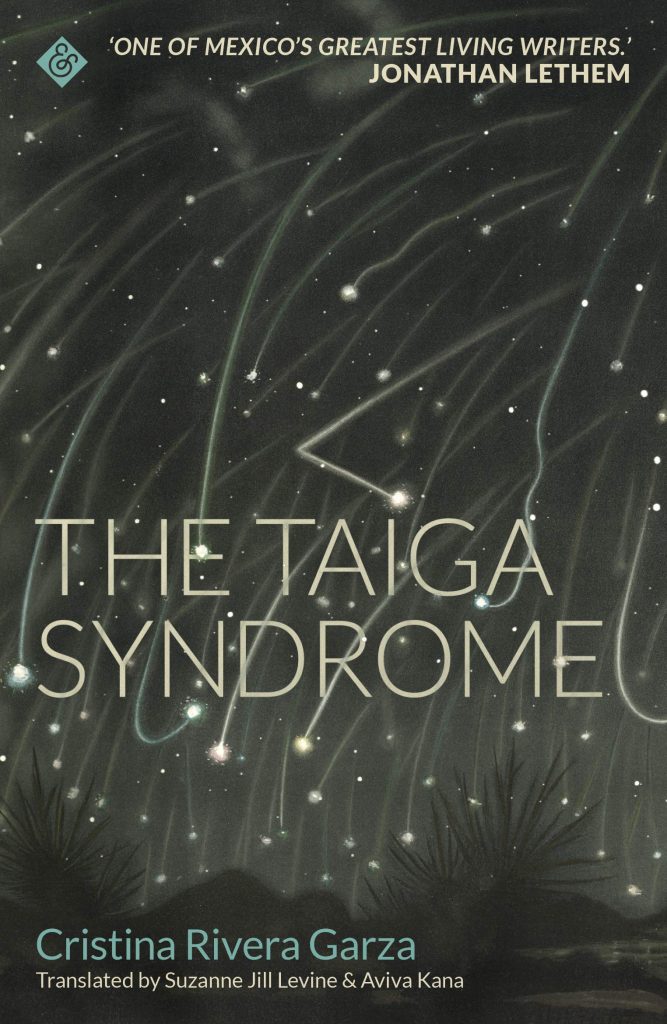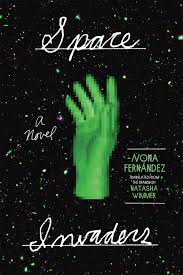I remember the boundaries on the map I either saw or anticipated in that moment. Long ago, when cartography was just beginning – though it was already a matter of life or death, and not just for those who went to sea – maps were called ‘Portolan charts’. From some place in my mind the words ‘Carta Pisana’ emerged. The date: 1290. The sophisticated outline of the shores. The details of life at the bottom of the enormous sea. Above all, I remember how, all at once, the whole forest closed in on us. I remember feeling suddenly small.

(From: The Taiga Syndrome by Cristina Rivera Garza, translated by Suzanne Levine and Aviva Kana.)
The protagonist of Cristina Rivera Garza’s short novel is a detective, or rather an ex-detective. She is approached by a client whose wife has disappeared into the great forests of the taiga, ostensibly with another man. Accompanied by an individual known only as the translator, our nameless detective heads off in pursuit of the woman, to persuade her to return possibly, to discover her reasons for leaving at the very least.
The Taiga Syndrome won the Shirley Jackson Award for best novella last year and it’s been on my reading list ever since. It’s wonderful to see work like this gaining prize recognition because now having read The Taiga Syndrome I can tell you it stretches the definition of ‘story’ till its bones begin to crack. Imagine what might have happened if the detective protagonist of Martin MacInnes’s Infinite Ground had been rejected by all his colleagues a little sooner. Imagine the fitful doomed pursuit of Anna Kavan’s Ice taking place in a landscape almost entirely denuded of human presence and you’ll get an inkling of what you’re in for here. The protagonist of The Taiga Syndrome appears to be in the grip of a breakdown, of acute mental distress – I kept seeing her as Nicole Kidman’s hell-bent cop Erin in Karyn Kusama’s underappreciated 2018 movie Destroyer. Like MacInnes’s cashiered police investigator, she is thwarted and confused, ground down by her alienation. In the grip of her own fugue state, she is one of the most unreliable narrators in fiction you will encounter.
As in Anna Kavan’s Ice, the landscape itself appears to exert a malign influence upon all who enter it. The taiga seems almost a sentient presence, and it does not welcome intruders:
The taiga is in fact a disease, a syndrome. Some people flee the monotonous terrain even when they know they can’t escape. Some people take flight, suicidal, without considering the speed, their goal, what lies beyond. Some of them dance. The more I talked the more incredible it all sounded to me. The more implausible. The angrier.
There are few answers here; even when the detective does finally catch up with her quarry, the conversation that ensues is anything but conclusive. Along the way we meet wolves, cannibalistic incarnations of Hansel and Gretel, nameless creatures issuing from the characters’ own bodies, a decaying metropolis built on top of a structure that resembles an oil rig. Nothing is fully articulated, much less explained. It is as if a story – a legend – existed, and was smashed with a hammer. As readers we search in the rubble, attempting to fit the fragments together, our efforts reflected in the dirty puddles of an unending rainstorm.
The novel ends with a playlist, which has its own chapter heading and is clearly intended to be interpreted as an integral part of the novel. Looking at the tracks Garza has chosen, this makes total sense. I love this touch in particular, working as it does to suggest that the entire novel is not a novel at all so much as a construct, a heap of found documents and sketches for fairy tale retellings, the disassociated, torn-up scraps from someone’s diary.
I won’t lie: there is a part of me that longs to fill in the gaps, to create from this abstract sketch of a novel the full-blooded beast of a fantastical journey it might alternately be. And perhaps in the end that is the point, that the author is inviting the reader to do exactly that, to recreate in their own mind not only the landscape they are passing through, but the reasons and answers the book does not yet provide. Its characters’ backstories and motivations, their eventual fates. The Taiga Syndrome is definitely the kind of work that would reward revisiting, and with its length so incandescently brief, this is a book you can easily devour – Red Riding Hood’s wolf-style – in a single afternoon.
In fact why not double the pleasure and take in Nona Fernandez’s Space Invaders at the same time? In this tantalisingly brief novella, the formations and imagery of the popular arcade video game are used to highlight a story of real shootings, real murders, real instances of sudden oblivion. Space Invaders follows the perspectives of a number of young people living out their schooldays in Pinochet’s Chile. As they revisit their memories of autocracy in the decade following, they cannot escape the fact that some of them – and one young woman in particular – are no longer among their number:

A green glow-in-the-dark hand. Riquelme keeps dreaming about it, can’t shake it. This time he sees it on a television screen. The hand advances rapidly, in pursuit of extraterrestrial children. They run back and forth, fleeing in terror, but the hand clutches at the first Martian within reach and at its touch there is an explosion. The body of the little Martian flies apart into coloured lights that vanish from the TV screen. On the screen the score goes up by one hundred points, but the amazing record set by Gonzalez’s brother stands unbroken. The green hand and many other green hands stream out of an Earthling cannon, on the hunt for more space invaders.
(From Space Invaders by Nona Fernandez, translated by Natasha Wimmer.)
Like The Taiga Syndrome, Space Invaders is a dense, dreamlike narrative, written as if its multiple narrators have grown used to speaking elliptically to avoid detection. Murders happen with such sudden matter-of-factness we find ourselves doubting the veracity of what we have been shown. When people disappear, it is as if we have been expecting it all along, as if these characters’ descent into darkness has been preordained.
What Fernandez’s work demonstrates most of all is the depth of scarring, the damage to the collective memory of an entire people. Her words are brief and potent and there are none that need be added. Our role as readers is to bear witness, to read between the lines of what is being said.
We would seem to be in the midst of a wild outpouring of talent among Latin American women writers at the moment: Rita Indiana (Dominican Republic), Ariana Harwicz (Argentina), Samanta Schweblin (Argentina), Carmen Boullosa (Mexico), Fernanda Melchor (Mexico), Sylvia Moreno-Garcia (Mexico), Cristina Rivera Garza (Mexico), and Nona Fernandez (Chile) among others are producing incredible work, much of it positioned somewhere on the speculative scale. The passion and fury that is often present in these writers’ stories is a lesson to us all in the form and dynamics of honest self expression, the limitless, undaunted reach of the imagination. Whenever I pick up a work by one of these writers I know I’m going to learn something. I know also that I’m going to be left reeling by the full-force visceral impact of words on a page. This is work I feel empowered by reading. It is also work that tells me I’m not doing enough, that I can go further, dig deeper. This is work that dares me to be more wolf.